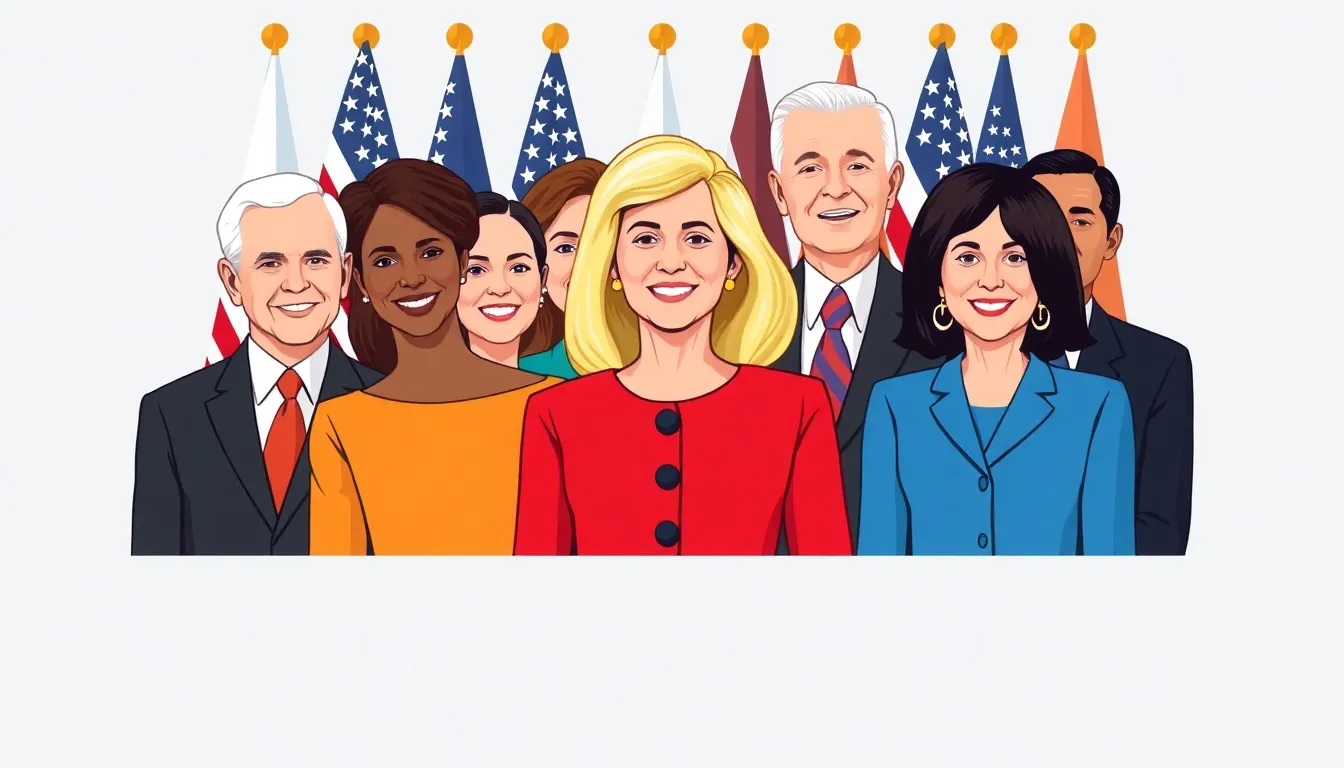In the ever-changing landscape of politics, alliances can make or break a candidate’s chances. Imagine two rival factions uniting over a shared love for coffee breaks and a mutual disdain for Mondays. Political alliances are like those unexpected friendships that blossom in the most unlikely places, often leading to surprising results.
From coalitions that challenge the status quo to partnerships forged in the heat of debate, these alliances shape policies and influence elections. They can turn the tide of public opinion faster than a politician dodging a tough question. Understanding the dynamics of political alliances reveals not just who’s in bed with whom, but also how power plays out on the grand stage. So buckle up as we dive into the fascinating world of political alliances, where the stakes are high and the coffee is always strong.
Table of Contents
ToggleUnderstanding Political Alliances
Political alliances play a crucial role in shaping electoral outcomes and influencing governance. These partnerships among political entities reflect strategic decisions aimed at maximizing advantages.
Definition and Importance
Political alliances refer to formal or informal agreements between parties or groups to achieve shared objectives. Such alliances often enhance resource mobilization, improve voter outreach, and increase political leverage. Political parties create these alliances to unite strengths and address common challenges within the electoral landscape. By teaming up, they increase their chances of success and expand their influence over policy decisions.
Historical Context
Throughout history, political alliances have shifted based on socio-political climates. In the 20th century, for instance, the formation of coalitions during World War II showcased unity among diverse groups working toward a common goal. The post-war era saw the establishment of alliances like NATO, reflecting shifting geopolitical dynamics. In contemporary politics, election cycles frequently witness partnerships among parties aiming to overcome rivals, demonstrating the ongoing relevance of alliances.
Types of Political Alliances

Political alliances can be categorized into formal and informal types, each serving distinct purposes in politics.
Formal Alliances
Formal alliances involve official agreements between political parties or groups. These agreements often include written contracts that outline specific goals and strategies. Political parties establish formal alliances to mobilize collective resources and enhance their electoral prospects. Examples of formal alliances include coalitions formed during elections, where parties agree to support each other’s candidates. Such structured arrangements enable parties to present a unified front, increasing their chances of success. Often, these collaborations yield joint campaigns and shared platforms, providing greater influence over legislative processes.
Informal Alliances
Informal alliances arise from shared interests or objectives without official documentation. These relationships often form between politicians or parties seeking mutual benefits. Political actors might collaborate on specific issues, such as healthcare or education, while maintaining independence. Informal alliances facilitate negotiations and strategic partnerships based on trust and understanding. Often, these alliances can lead to grassroots movements, influencing public opinion and shaping policies. Such flexibility allows parties to adapt quickly to changing political landscapes, fostering innovation and collaborative problem-solving.
The Role of Political Alliances in Governance
Political alliances play a vital role in governance, shaping how parties collaborate to achieve shared goals. Such partnerships often lead to increased stability and efficiency within political systems.
Coalition Governments
Coalition governments form when multiple political parties join forces to establish a majority. These alliances create a more inclusive representation by incorporating diverse perspectives and interests. Parties typically negotiate agreements that outline their commitments to policy initiatives and governance strategies. Successful coalition governments can lead to effective decision-making and stability, as seen in countries like Germany and the Netherlands, where cooperation among parties has been critical to navigating complex policy landscapes.
Policy Making and Implementation
Policy making significantly benefits from political alliances, as combined resources amplify influence. Collaborating parties can leverage their strengths to push for legislation that reflects shared priorities. This collaboration often results in more comprehensive and representative policies. In many cases, alliances enhance accountability in governance, ensuring that multiple parties review and refine proposals before implementation. Legislative success often depends on the ability of coalition partners to compromise and work together, demonstrating the necessity of alliances in translating political aspirations into actionable plans.
Case Studies of Successful Political Alliances
Political alliances often illustrate how collaboration leads to significant success in political landscapes. The following examples highlight successful political partnerships and their impact.
Example 1: The European People’s Party (EPP)
The European People’s Party represents a successful political alliance within the European Parliament. This center-right coalition includes Christian Democratic and conservative parties from across Europe. Formed in 1953, the EPP has evolved into the largest political group in the Parliament, commanding considerable influence on policy-making. Its strength lies in uniting diverse national parties, enabling them to tackle issues like immigration and economic policy collectively. The EPP’s unity has proven essential in advancing legislation and maintaining a stable presence in European politics.
Example 2: The National Socialist German Workers’ Party (NSDAP)
The NSDAP, commonly known as the Nazi Party, illustrates the complex dynamics of political alliances. In the early 1930s, this far-right party forged alliances with various nationalist groups, enhancing its appeal. Through strategic partnerships, it gained access to resources and broader voter bases. This coalition-building contributed to Adolf Hitler’s rise to power in 1933. While the NSDAP’s legacy remains deeply controversial, analyzing this alliance underlines how political partnerships can drive significant shifts in governance, shaping national agendas with widespread consequences.
Challenges Faced by Political Alliances
Political alliances often confront significant challenges that can hinder their effectiveness and longevity.
Internal Conflicts
Disagreements among coalition members frequently complicate collaboration. Conflicting priorities or ideologies often lead to friction, resulting in a lack of consensus on key decisions. Instances of power struggles can emerge as party leaders vie for influence within the alliance. These internal tensions might erode public trust, making it difficult for the alliance to maintain its support base. Frequent communication can address some issues, but deep-rooted ideological divides may persist, undermining the effectiveness of the partnership.
External Pressures
Political alliances face various external pressures that can destabilize their cohesion. Competition from rival parties often intensifies, as opposing groups may seek to exploit divisions within the alliance. Changing public opinions can also influence perceptions of political partnerships, shifting voter support away from the alliance. Additionally, economic crises or social unrest can challenge the alliance, forcing members to respond quickly to maintain relevance. Adapting to these external factors requires strategic planning and often leads to significant compromises, which may dilute original objectives.
Political alliances play a pivotal role in shaping the political landscape. They enable parties to unite for common goals while navigating challenges and opportunities. The dynamics of these partnerships reveal the intricate balance of power and influence essential for effective governance.
As political environments evolve, understanding the nature of alliances becomes crucial. Their ability to enhance representation and foster collaboration underscores their significance in modern politics. By examining both successful and challenging alliances, one can appreciate the complexities that define political relationships today.





